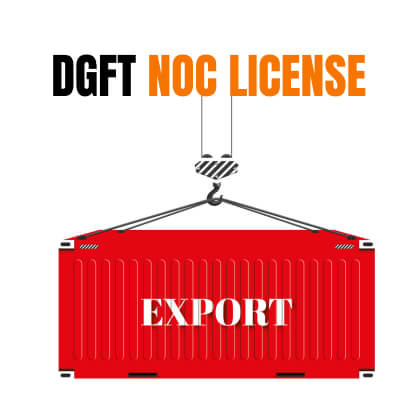
India's overseas trade is heavily regulated by the Directorate General of Overseas Trade (DGFT). DGFT's No Objection Certificate (NOC) is required if you intend to import or export restricted goods. This tutorial will lead you through the procedure, dissecting it into straightforward, manageable steps.
The Ministry of Commerce and Industry's (DGFT) is in charge of overseeing India's import and export regulations. It guarantees that commercial operations abide by international agreements and national rules.
Goods classified as restricted are those whose sensitive nature necessitates specific authorization for import or export. These could be things made from wildlife, chemicals, or defense gear. Without a DGFT NOC, it is impossible to exchange these items.
Step 1: Identify the Restricted Item
Verify whether your item is banned before submitting an application for a DGFT NOC. The DGFT's Import Export Policy (IEP), which includes goods under several categories such as free, limited, forbidden, and state trading enterprise (STE), has this information.
Step 2: Obtain a Digital Signature Certificate (DSC)
Why You Need a DSC
A Digital Signature Certificate (DSC) is essential for signing electronic documents securely. DGFT applications require a DSC for authenticity and verification purposes.
How to Get a DSC
Step 3: Register on the DGFT Website
Creating an Account
Step 4: Prepare Your Application
Gather Necessary Documents
Please make sure you have the following documents available before beginning your application:
Step 5: Submit the Online Application
Filing the Application
Step 6: Track Your Application
After submission, you can track the status of your application through the DGFT portal. Log in and go to "Track Status" under the "Services" menu. Enter your application reference number to see updates.
Step 7: Respond to Queries
DGFT may pose questions or ask for more details. Please reply as soon as possible and send the required paperwork to prevent delays. Make sure your contact details are up-to-date, and check your inbox frequently for alerts.
Step 8: Receive the NOC
Your application will be approved by DGFT, and you will obtain the NOC online. For your records, kindly download and print the certificate. To prevent problems during import/export, make sure that the information on the NOC corresponds with your application.
Step 9: Use the NOC
You can now import or export the banned item after obtaining the NOC. To speed up the process, provide the NOC and any other necessary paperwork to the customs officers.
For Registration Visit: DGFT NOC Application
To understand more about the resticted items, click HERE
If you wish to apply online to DGFT, click HERE
Although requesting a DGFT NOC for restricted commodities may appear difficult, you may complete the process without difficulty if you follow these instructions. Being organized and focusing on the details is the key. You can get the permissions you need for your trade activity if you have the proper paperwork and respond to requests on time. Comprehending the DGFT procedures is essential for both individual and company importers/exporters to ensure compliance and efficiency in their operations.





We are the pioneers in offering environmental consulting services to our patrons, giving us the first mover advantage & keeping us ahead of our competitors.
Very experienced in filing, monitoring & submission of CDSCO Compliances, Drugs Manufacturing & sale guidelines, Environmental Impact Assessment, AERB consulting services, Pollution Control Board CTE & CTO Advisory Services, Waste Management Authorization from State Pollution Control Boards, Fertilizers & Insecticides Manufacturing, Wholesale & Import Compliances
